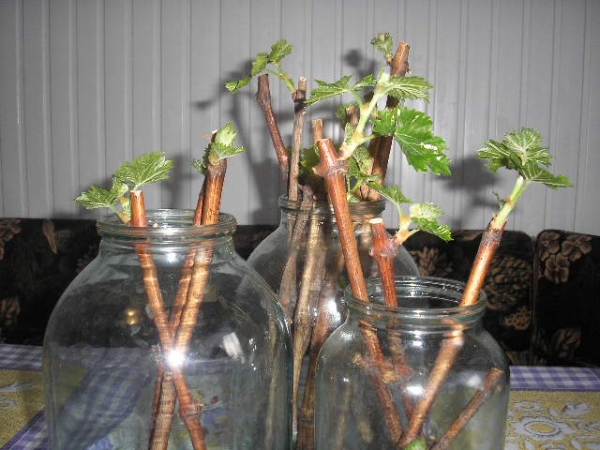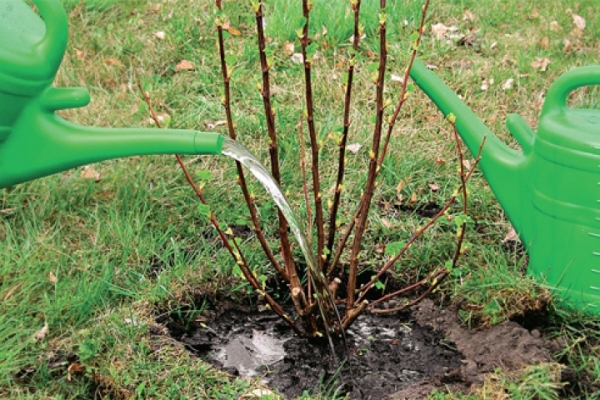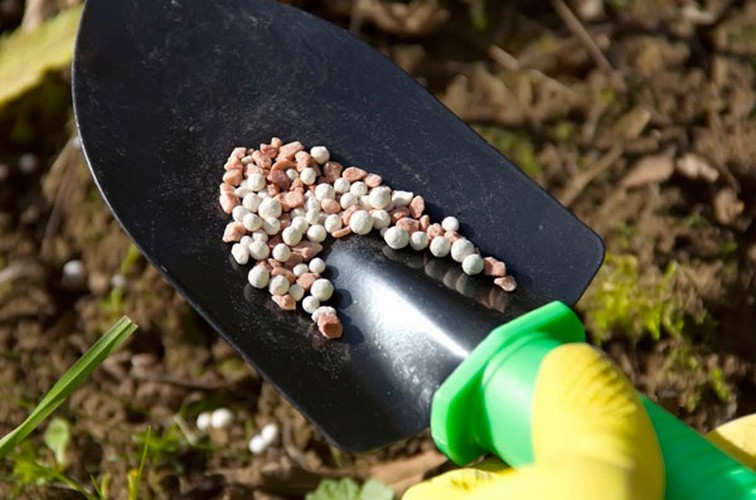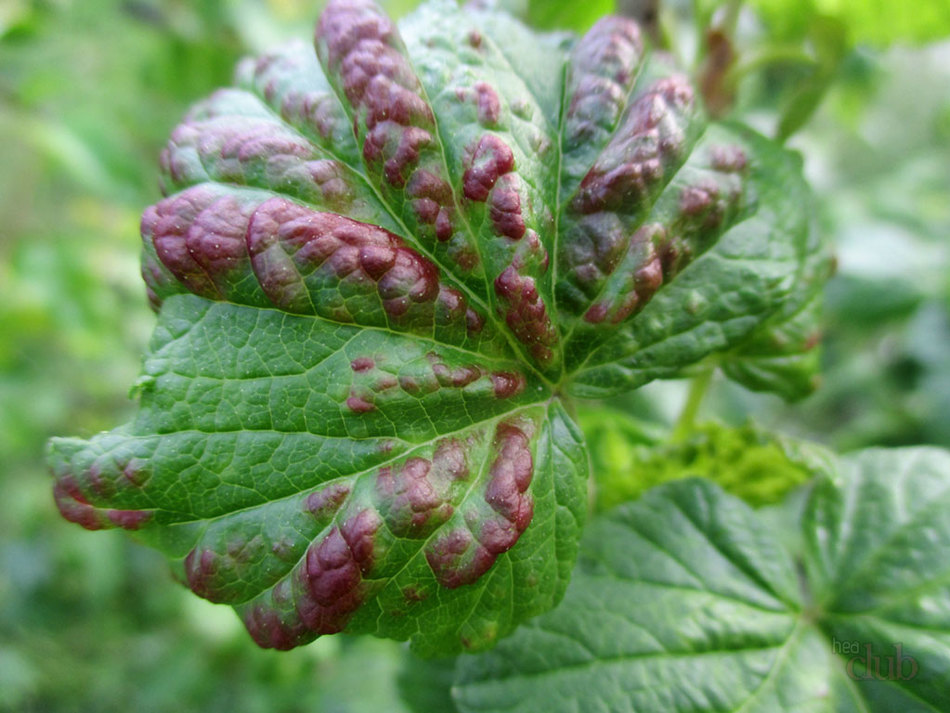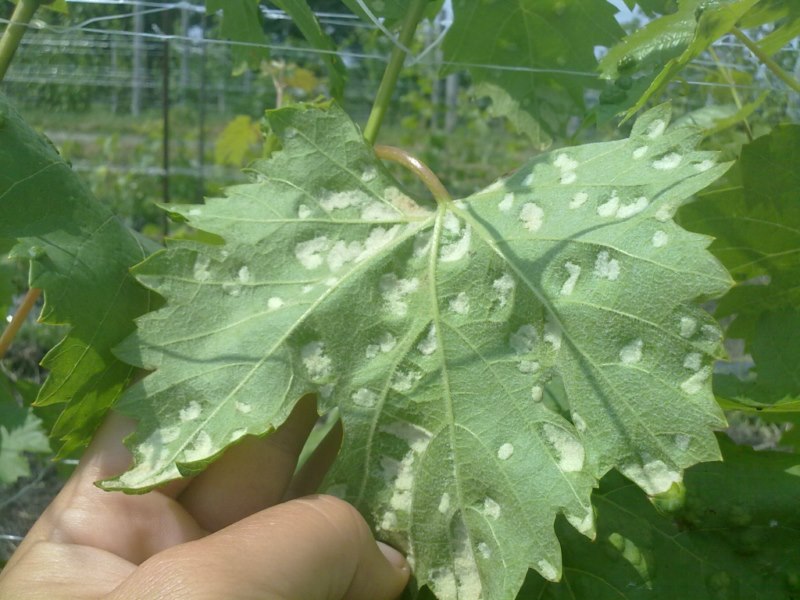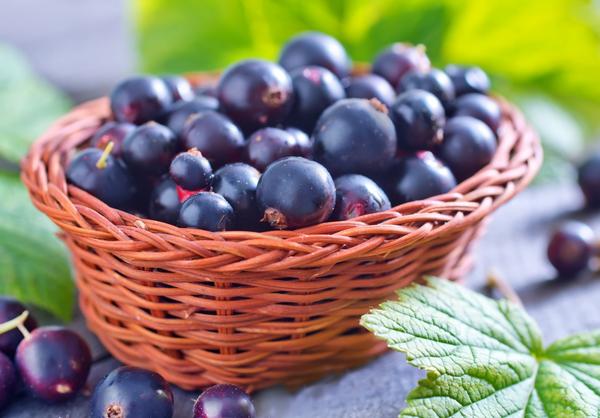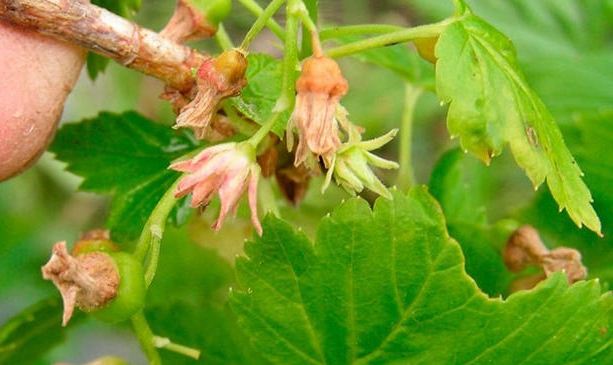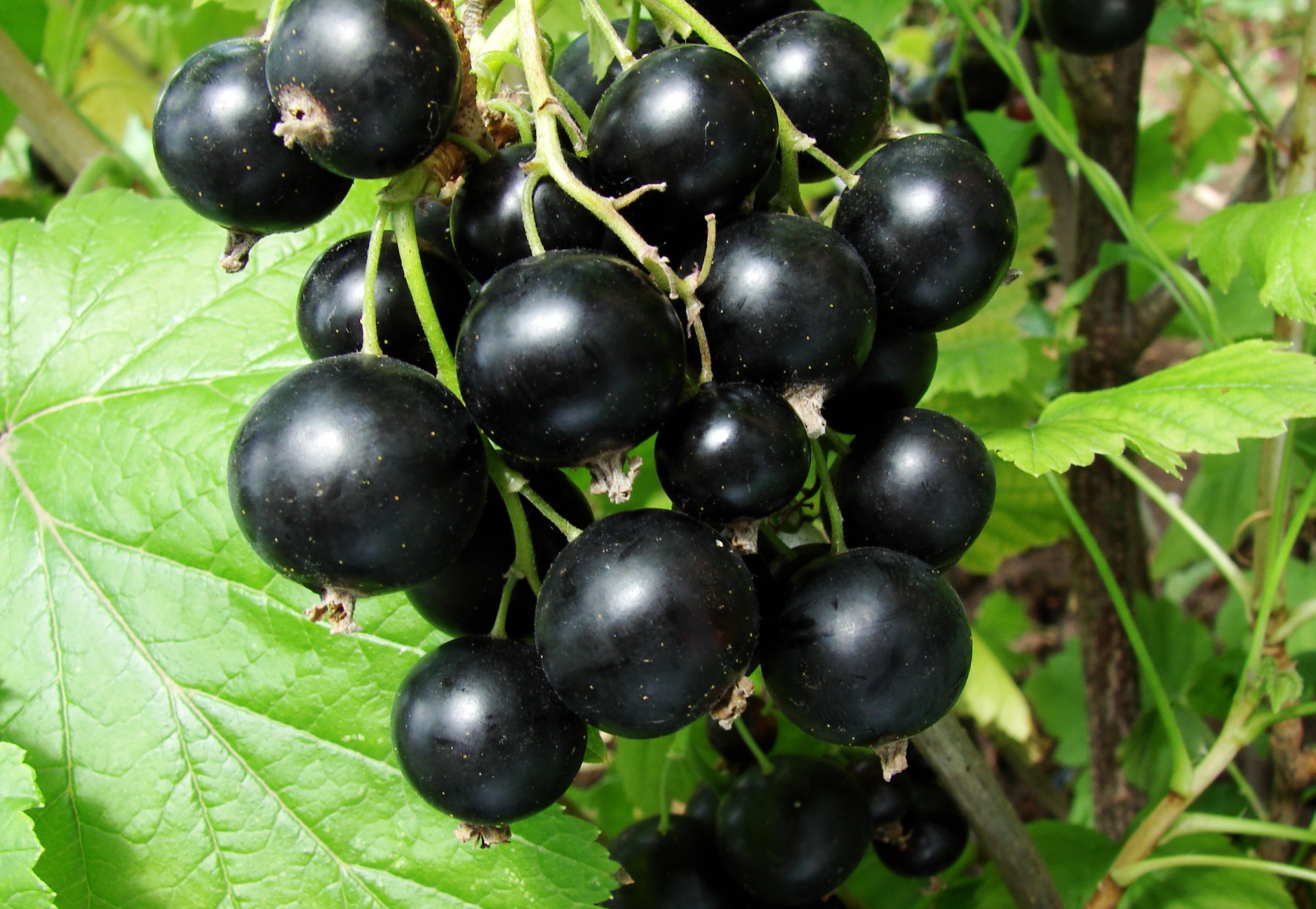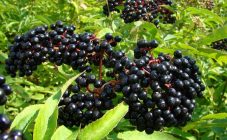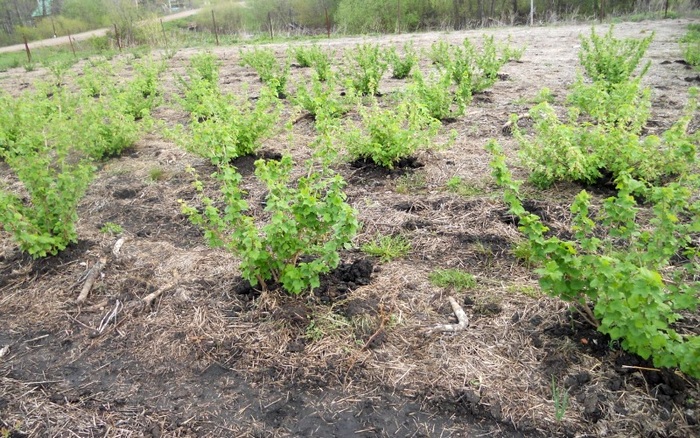Content:
Today, currant bushes grow on almost every household plot. There are many varieties of it, but still the most common and popular is black currant. These fertile shrubs reproduce well, tolerate subzero temperatures perfectly, and, with proper care, bring a good harvest. Black currants begin to bear fruit very quickly. When the red currant begins to bear fruit after planting, planted in parallel with the black bushes, the latter already gives a full harvest.
Features of black currant
Black currant is a perennial shrub that can bear fruit for up to 15 years without replacing the bush. Plant height reaches 1.5-1.7 m. The main skeletal branches are tree-like. If the cultivation of black currants in summer cottages is carried out in accordance with all the recommendations, then the fruitfulness reaches up to 5-6 kg of berries.
The leaves of the plant are five-lobed with a smooth top side. They are distinguished by a specific aroma, like the shoots. The fruits are round-shaped berries, reaching a diameter of 7-10 cm. Depending on the variety, the color of the berries can be black or dark purple. The pulp is aromatic, soft, with a lot of seeds. It begins to bloom in May-June, harvesting can be carried out in July-August, depending on the variety. Some varieties ripen together, while others ripen in several stages.
It grows in almost all territories of Russia and other European countries. Man uses leaves, fruits and shoots.
Calorie content and nutritional value of the berry
Black currant is a low-calorie food. 100 grams of raw berries contain about 63 kcal.
| Nutritional value per 100 grams of product | |
|---|---|
| Proteins, gr. | 1 |
| Carbohydrates, gr. | 7.3 |
| Water, gr. | 83.5 |
| Fats, gr. | 0.4 |
| Ash, gr. | 0.9 |
| Caloric content, kcal | 63 |
Growing features
Despite the unpretentiousness of the culture, it is nevertheless necessary to adhere to certain rules so that the bush pleases with an excellent harvest for a long time. It is important to know how to get a good harvest of blackcurrant so as not to be disappointed in this plant. The basic agricultural technology is very simple.
Landing
The first and important point that guarantees the success of planting black currants is that the roots should be exposed to the air for as little time as possible. If, nevertheless, it turned out that they have dried up, they should be immersed in water for several days, but no more than three, otherwise they will not be able to take root. Black currants are planted in one of two seasons: spring (April-June) or autumn (September-October). Cultivation of black currants is carried out by cuttings or seedlings. The cutting method is the most common.
Soil preparation
It is possible to grow black currants on various types of soil, but the shrub feels best on slightly acidic (pH not more than 6.5, lime is introduced to reduce acidity) fertile well-drained soil. Currant is a light-loving plant, but it can also be successfully grown in a slightly darkened place. Not too fond of drafts.
Before you start planting currant seedlings, you should properly pre-cultivate the soil. All weeds and roots are removed, and then a layer of manure or compost of 8 cm is distributed over the area of the entire intended area. Also, the introduction of complex fertilizer into the ground will not interfere.
Planting methods
There are several options for planting black currants, each of which has its own advantages and is relevant under certain circumstances:
- Single landing. This method brings the greatest yield, and the bush will live much longer than with other options. Between the black currant bush and other crops, they maintain a distance of at least 2 meters, even if it is a tree;
- Ordinary landing. This option will allow you to get the maximum number of berries from the minimum area. This method is most often used in commercial cultivation, but the bushes very quickly become obsolete, requiring replacement. The distance between bushes, characterized by a compact arrangement of shoots, withstands about 70-100 cm, and for bushes with a lush crown, the distance is 120-150 cm;
- Landing on a trellis. In this case, the planting of the bushes is carried out at a distance of 50-100 cm. Then the branches of the currant are fixed on the trellises, resulting in a solid fruit-bearing wall. This planting technology will decorate the site. You can also grow red currants on a trellis.
The main stages of planting
- The seedling sits at an angle of 45 degrees (the usual vertical planting is also allowed);
- The root collar sinks into the ground by 5-6 cm;
- The ground around the seedling is compacted;
- After planting, a small depression is made around the bush, into which 10 liters of water are gradually poured. The land around the bush is mulched 5-10 cm using sawdust or peat;
- To accelerate the growth of the root system, the shoots of the seedling are shortened to 4-5 buds.
Care
In order for the shrub to please with a good harvest every year, simple care rules must be followed. Even a beginner can handle them. It is important to start caring for black currants from the very early spring. To get enough oxygen and moisture to the roots, it is necessary to carry out regular loosening procedures with the removal of weeds. Loosening is carried out near the roots to a depth of 5-6 cm, with distance from the stem, the depth increases to 15 cm.
Despite the fact that black currant bushes tolerate drought well, in order to get the desired harvest, it is necessary to maintain sufficient soil moisture (about 80%). When watering, the soil should be soaked to a depth of 40-50 cm. To implement this, one young bush requires about 20 liters of water, and for a 4-5 year old plant - up to 40 liters.
Regular feeding
If a sufficient amount of fertilizer was applied during planting of the bush, you can forget about additional feeding during the first two years. From the third year, the bush should be supplied with nutrients. Mineral and organic fertilizers are applied alternately. Organic compounds are brought in at the rate of 2-3 kg per square annually.
Doses of fertilizing the soil with mineral fertilizers
| Fertilizer type | Quantity per sq. m, gr. |
|---|---|
| Nitrogen | 01.10.2020 |
| Phosphoric | 30 |
| potash | 01.10.2015 |
Pruning
Currant bushes are pruned annually. This helps to increase the yield. The procedure can be carried out in two stages: in the spring, before the buds swell, and in the fall. So, the timely removal of bad shoots will help prevent the growth of bacteria and diseases. Broken, diseased branches lying on the ground are subject to pruning.
Diseases and pests
But do not think that the cultivation of black currant in the country is rainbow and simple. It is possible that shrubs will be affected by diseases or pests during growth. Among the most common diseases, it should be noted:
- Anthracnose. A sign of the development of the disease will be the appearance of brown spots on the leaves. Sometimes such spots appear on young shoots;
- White spot. At first, with the development of this disease, brown spots appear, but over time they change color to white;
- Goblet rust. A symptom of the disease is the development and increase of rust-colored growths on foliage;
- Powdery mildew - also a frequent visitor to the bushes. At first, it appears as a white bloom on berries and branches, and then its color changes to brown.
When the first signs of any disease appear, immediate treatment is required. First, it is important to determine what disease the plant is affected by. In modern stores, a large number of drugs are offered that will help cure any problem.
Among the pests that can spoil the crop, the most common are:
- Kidney mite;
- Fire Flame;
- Currant aphid;
- Berry sawfly;
- Shield;
- Spider mite.
The fight consists in the timely treatment with insecticides, as well as the removal of affected branches.
Disease prevention
Regular preventive measures will help to avoid many diseases and pest settlements:
- Sanitary and thinning pruning;
- Treatment with special preparations, for example, Bordeaux liquid, which strengthen the plant and protect against diseases;
- After the snow melts, it is imperative to loosen it;
- In May or late April, the bush is watered;
- During the period when the leaves begin to bloom, it is important to carry out additional feeding; 0.5 kg of urea and wood ash are mixed and distributed in the soil under the bush;
- Weeds are a favorable environment for the development of bactericidal and fungal diseases, so it is important to remove them in a timely manner.
Tricks of increasing the yield
There are several secrets that experienced summer residents own to increase the yield and size of black currant fruits:
- To guarantee a productive year, several varieties with different ripening periods should be planted on the site. This reduces the likelihood that all bushes will suffer from spring frosts;
- Increases yield and sufficient space. The minimum distance that can be left between the bushes is 1 m, and the optimal distance for a large harvest is 2 m;
- To increase the yield, you can apply a special top dressing from potato peel. 10 liters of water is brought to a boil, and a liter of potato peel is poured. The container is wrapped up and infused until it cools completely. The bushes should be fertilized during the flowering period. Pour 3 liters of the composition on each bush;
- A hot shower will help eliminate pests that can affect crops. The bush should be poured with water at the highest possible temperature from a spray can. The procedure is carried out in early spring, when the soil has completely thawed. This should be the beginning of caring for the plant;
- Currants are cross-pollinated plants, this will help increase the size of the berries if you plant different varieties nearby.
These simple tricks and adherence to the basic rules for growing black currants in a suburban area will help you get a high-quality harvest annually and please yourself with vitamins from a jar in winter. Since one of the important features of black currant is that during heat treatment, the fruits retain most of the nutrients that make up the composition.

